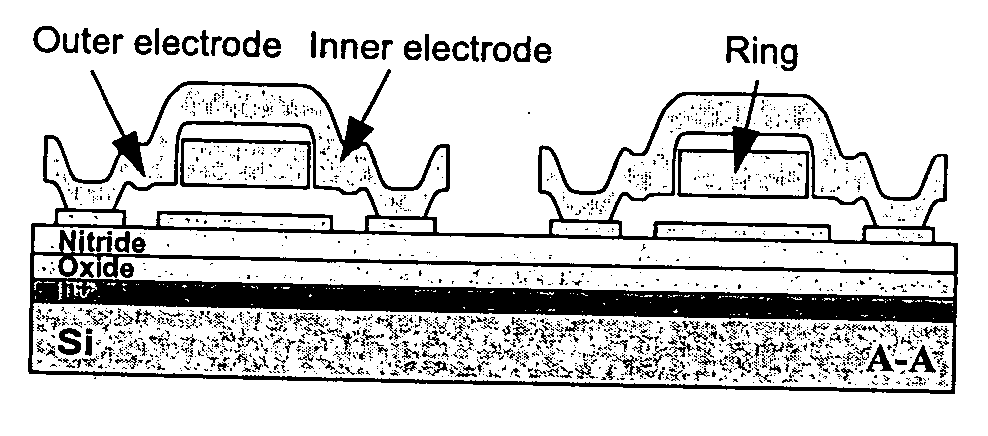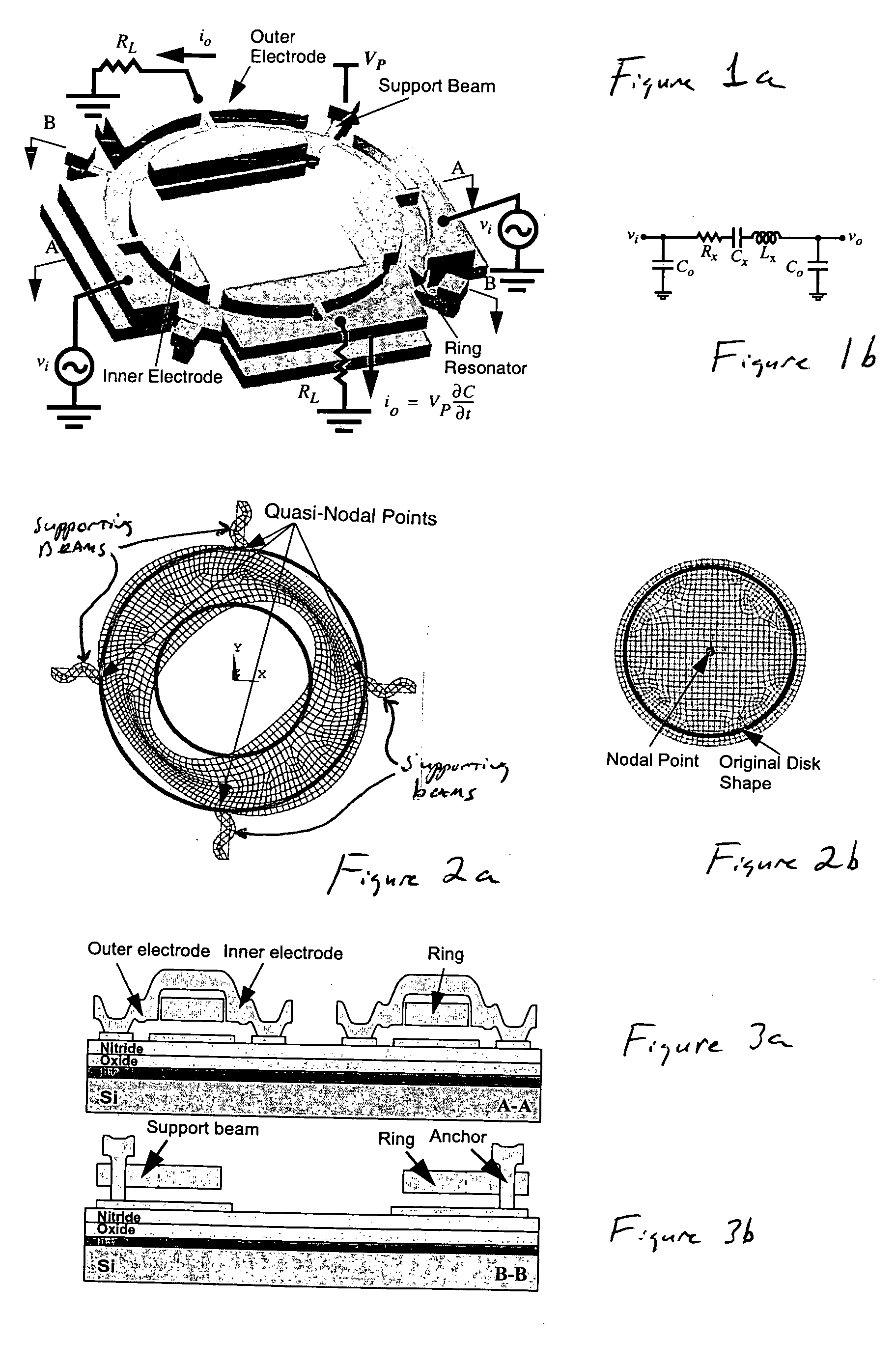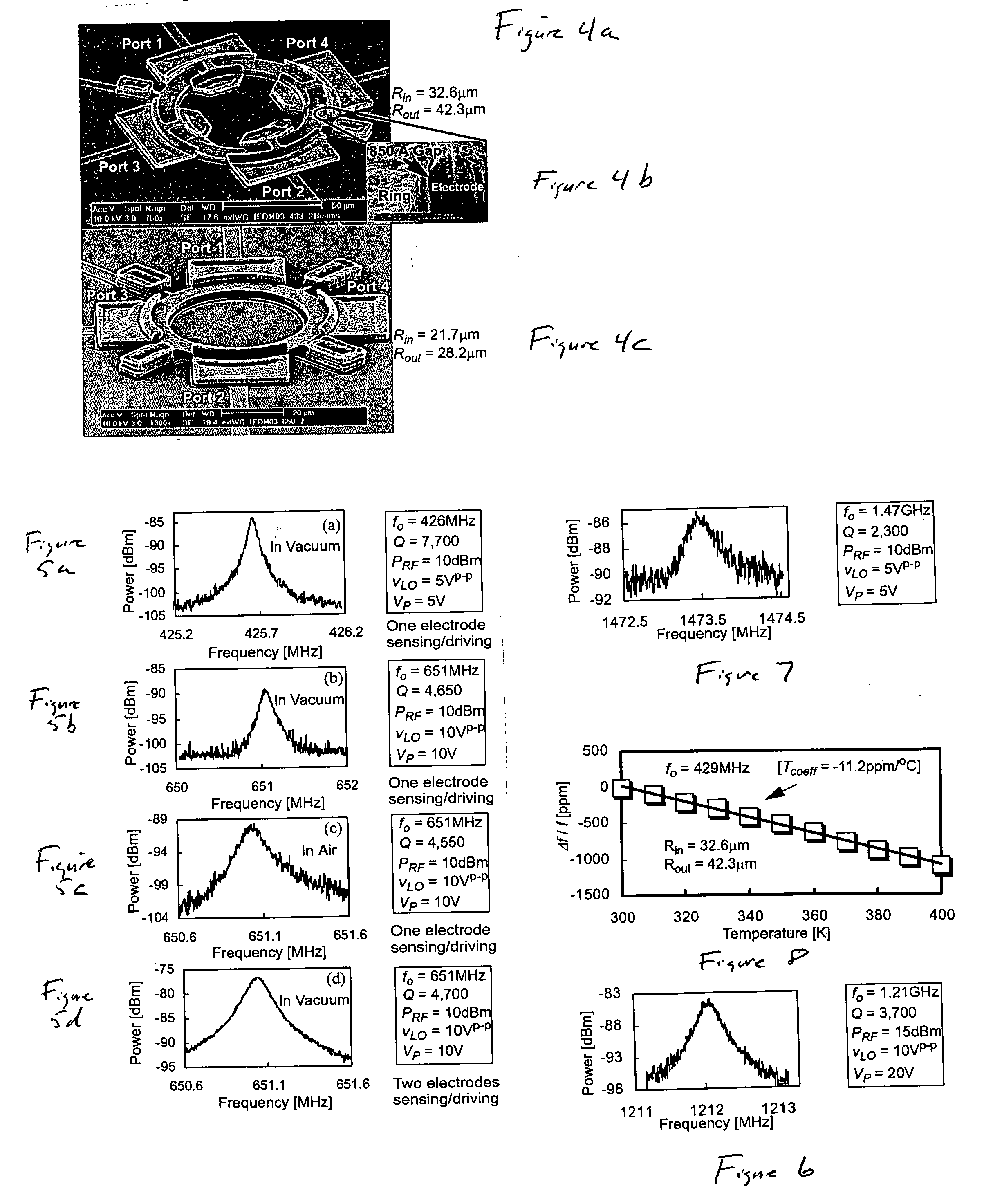Micromechanical resonator device having a desired mode shape
a micromechanical and resonator technology, applied in the direction of impedence networks, electrical devices, etc., can solve the problems of high ghz range mechanical resonators demonstrated so far that they cannot be directly coupled to antennas in rf systems, and achieve the effect of reducing mechanical losses on the substra
- Summary
- Abstract
- Description
- Claims
- Application Information
AI Technical Summary
Benefits of technology
Problems solved by technology
Method used
Image
Examples
Embodiment Construction
)
[0032] One embodiment of the present invention provides a micromechanical resonator device having an extensional wine-glass mode shape. This resonator operates in a special resonant mode, with a shape shown in FIG. 2a, that combines aspects of two previously demonstrated modes, namely, the extensional radial contour vibration mode [1] [2] and the wine-glass disk vibration mode [3], together with the geometric advantages of a ring structure [4], to achieve the best of each design. In particular, this extensional wine-glass resonator design allows: (1) a high resonance frequency, owing to its use of an extensional mode; (2) a low motional impedance, due to its ring-geometry, which offers a larger capacitive transducer overlap area than provided by the perimeter of a filled disk; and (3) higher Q, since its mode shape resembles a wine-glass-like mode [3], which allows its support structure to avoid a centrally located stem and thereby reduce anchor losses. With this design, frequencie...
PUM
 Login to View More
Login to View More Abstract
Description
Claims
Application Information
 Login to View More
Login to View More - R&D
- Intellectual Property
- Life Sciences
- Materials
- Tech Scout
- Unparalleled Data Quality
- Higher Quality Content
- 60% Fewer Hallucinations
Browse by: Latest US Patents, China's latest patents, Technical Efficacy Thesaurus, Application Domain, Technology Topic, Popular Technical Reports.
© 2025 PatSnap. All rights reserved.Legal|Privacy policy|Modern Slavery Act Transparency Statement|Sitemap|About US| Contact US: help@patsnap.com



